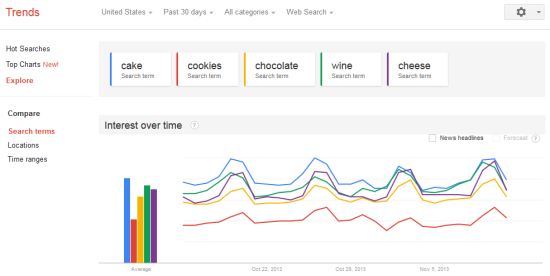How Small Businesses Can Use Big Data
Here are four key benefits of using big data: Many think Big data is useful or accessible only to large businesses and multinational conglomerates. In reality, it is a relative term and can be valuable to small businesses ranging from mom-and-pop shops to start-ups to local entrepreneurs. Mark Troester, global product marketing manager of SAS, shares this simple definition for big data: when volume, velocity and variety of data exceed an organization's storage or computing capacity for accurate and timely decision making.
The Economist Intelligence Unit’s research illustrates in its recent study Big Data: Harnessing a Game-Changing Asset that:
- Over the last year, 73 percent of survey respondents say their collection of data has increased "somewhat" or "significantly."
- Companies self-identified as "strategic data managers”—those with well-defined data management strategies that focus resources on collecting and analyzing the most valuable data—tend to financially outperform their competition (53 percent compared with 36 percent).
- 32 percent of self-identified "data wasters" say they lag behind their peers on financial performance. Only 1 percent of strategic data users report that.
- More than half of companies report that they expect the increased volume of data to improve operations. The second most popular answer (respondents could choose two) was 36 percent expect it to inform strategic decisions.
Here is how small businesses can use big data to make better decisions.
Personalize your in-store strategies by tracking visitors
Small businesses can look for less expensive ways to increase revenue and improve customer satisfaction by asking intuitive questions to 1) understand buying patterns 2) offer the most appropriate merchandise and 3) provide a customized experience that stays with buyers for a long time. By tracking and recording the times of customer visits to your store, noting the days and time periods with heavy and light traffic, you can plan your staffing. By observing the groups of items purchased by individuals, you can understand buying behaviors and plan discounts for bundled offers. If stores get high numbers of mothers, then it would be good strategy pin down their typical shopping days and times and have some extra woman team members to help with kids and allow keep the moms to shop. These in-store strategies will help you to:
- Develop close relationships with customers based on a deep understanding of their behaviors and needs
- Deliver the targeted advertising promotions and product offers to customers that will motivate them to buy
- Balance inventory with demand so you’re never out of stock or carrying excess inventory
- Charge exactly the price that customers are willing to pay at any moment
- Determine the best use of marketing investments
- Locate stores, distribution centers, and other facilities in optimal locations
A few leading firms have already achieved dramatic benefits. Kroger, for example, gets a 40% redemption rate from its analytically-targeted coupons, compared to an industry average of 2%, and believes the promotions have increased overall sales by 5%.  Automation can also contribute to improving the customer experience. Tesco, Britain’s multinational grocery and general merchandise retailer, promised customers that it would open up a new checkout line if there was more than one person in front of them. They achieved this seemingly impossible goal by introducing heat sensors to monitor the number of people in the store. The technology collected information such as the number of people in each line, the average wait time and even the average store performance. This allowed Tesco to “predict the checkouts that [needed] to be open per hour,” according to then CEO Terry Leahy. The company used technology to collect big data and analyze the trends across all of their stores so they knew how many staff they would need working at any time, as well as how many registers to open. The company claims this led to a ten percent increase in pre-tax profits.
Automation can also contribute to improving the customer experience. Tesco, Britain’s multinational grocery and general merchandise retailer, promised customers that it would open up a new checkout line if there was more than one person in front of them. They achieved this seemingly impossible goal by introducing heat sensors to monitor the number of people in the store. The technology collected information such as the number of people in each line, the average wait time and even the average store performance. This allowed Tesco to “predict the checkouts that [needed] to be open per hour,” according to then CEO Terry Leahy. The company used technology to collect big data and analyze the trends across all of their stores so they knew how many staff they would need working at any time, as well as how many registers to open. The company claims this led to a ten percent increase in pre-tax profits.
Track all marketing channels
Since many small businesses use various offline marketing channels, it is important to track each of them to determine response rates by geography and demographics to plan more effectively. These are some ways you can track different media sources:
- Ask each new client who visits or calls where they heard about you (ensure everyone who has direct contact with customers does this and reports).
- Provide different coupon codes in different publications to understand the ROI for each. Once customers come back and redeem coupons, note the details of items purchased and total sales generated. This will give insight on buying patterns from different offers, publications and types of buyers.
- When advertising on radio, use unique phone numbers or separate landing pages with different coupon codes. By tracking these sales, you can capture the ROI from this channel. You may find an audience with needs that vary greatly from your other customers. For example, a restaurant that normally caters to business executives for lunch could start getting students from nearby colleges for dinner after advertising on a pop radio station. Then the business could offer fun menu options at lower price ranges for this segment.
Share relevant offers personalized to suit different needs
Small businesses may not have the huge volume of data compared to big businesses. The key is not the volume of data you collect; it is the volume of data per user. The more you know about your customers, the better personalization you can provide for their interactions with your company.
If you collect data from leads generated through various channels and then track business generated from each each lead, you can connect all the data points to better understand the core audience each medium serves and share more relevant offers and deals.
The 2014 IKEA Catalog app lets users virtually try out furniture for size. It lets customers furnish their homes digitally 'to enable them to find the perfect fit' making the catalog relevant and customized for each individual. When small businesses use various media to share their best deals, holiday discounts and special promotional offers, campaigns will generate more sales if they are in line with the expectations of target groups.
Offer relevant online content by correlating searches
In this age when most businesses have websites and use social media platforms to market their products and services, it is extremely beneficial to us the big data available online to check what potential buyers are looking for. Start with Google Correlate and do a little digging into search trends. For example, before planning on discounts for Thanksgiving, you can check what kind of gifts are spiking in searches.  This will allow you to create innovative offers and source products way before your competitors catch up!
This will allow you to create innovative offers and source products way before your competitors catch up!
With this knowledge you can also get started producing content related to “Holiday Gifts in Style this Season” or “How to Choose the Best Gift for the Woman in Your Life”. Such content will give you visibility on social media platforms to get on the radar of new customers.
Use Google Analytics to better connect with website visitors
If you have a website, you can easily install a tracking system like Google Analytics to check who’s coming to your site, what pages/products/services they’re looking at, where they are dropping off your website and the overall traffic patterns. This is big data in action. Once you detect a recurring pattern of visitors dropping from a certain page without reaching the desired goal, you can hire pros to analyze where you are going wrong and how can that be rectified. Possible reasons could be unclear calls-to-action to incomplete product information, lack of customer testimonials to long page load times. Fixes need to be tackled quickly to avoid negative brand perceptions that could hamper your sales.
How are you employing big data tactics to attract and retain customers?
*/











